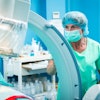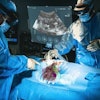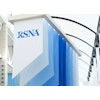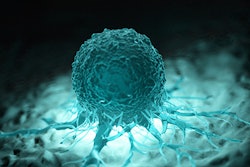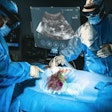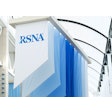A mammography-based radiomic nomogram could be useful in predicting risk of malignancy in suspicious breast microcalcifications, according to research published November 7 in Academic Radiology.
A team led by Yusi Chen from the Second Affiliated Hospital of Harbin Medical University in China found that the nomogram, which combined radiomic scoring with clinical factors, achieved a high area under the curve (AUC) value in a validation set of patients with breast microcalcifications.
“The combined model could be considered as a potential imaging marker to predict malignant risk,” Chen and colleagues wrote.
Differentiating between benign and malignant breast lesions is important for women to receive individualized treatment. Radiomics have been explored in breast imaging, with previous research highlighting the performance of MRI-based radiomics.
Chen and colleagues sought to develop and validate a mammography-based radiomic nomogram for predicting the malignant risk of suspicious breast microcalcifications. It developed the model by uploading images and clinical data to a cloud-based platform (Radcloud, Huiying Medical Technology). The team used the platform to process image segmentation, extract radiomic features, and perform radiomics analysis. However, two radiologists with more than 20 years of experience manually delineated regions of interest on mammography images.
In total, the training set consisted of 1,409 radiomic features from craniocaudal and mediolateral oblique images. The researchers also eliminated irrelevant features by using intraclass correlation coefficient, variance thresholds, selectKBest, and the least absolute shrinkage and selection operator (LASSO) methods. From there, they created the radiomics score, which consisted of 29 optimal features.
The team tested its nomogram on 496 women with histologically confirmed suspicious breast microcalcifications. The women were randomly divided into a training set (n = 346) and a validation set (n = 150). The team reported that of the total lesions accounted for, 154 were malignant, including 114 ductal carcinoma in situ (DCIS) cases and 40 invasive carcinomas. The remaining were deemed benign.
The researchers found that the nomogram when combined with menopause status and the morphology and distribution of microcalcifications had the highest AUC when compared with clinical features and radiomics features alone.
| Comparion in performance between clinical, radiomics, combined models | |||
|---|---|---|---|
| Clinical model | Radiomics model | Combined model | |
| Test set | |||
| AUC | 0.799 | 0.831 | 0.929 |
| Validation set | |||
| AUC | 0.793 | 0.838 | 0.926 |
The study authors highlighted that based on their results, the nomogram is “an effective tool” to assist patients and clinicians in decision-making when it comes to suspicious breast microcalcifications.
“It is conducive to promoting benign and malignant diagnosis, timely further intervention, downgrading classification, and changing follow-up strategies,” they wrote.
Chen and colleagues also called for future research to combine computer-aided detection (CAD) and deep learning to improve the model’s stability.
The full study can be found here.
